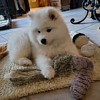Posted 5 years ago
 bohemiangl…
bohemiangl…
(647 items)
I believe that the official name for this type of Loetz vessel is indicated in the production notes for PN II-572. The description says "Capri Gerippt & Gedreht". I will leave the name Capri out of this discussion for now - I have some thoughts on that, but I'm not ready to roll those out without further research. However the description of "Gerippt & Gedreht" (Ribbed and Twisted) fits perfectly. The shape of this Russian green conical, tapered vase has been used for other known Loetz decors (see photo #3). Examples of this decor on other shapes, along with the paper pattern with description for PN II-572 are shown in the last photo. This is not a very well known decor of Loetz, and they don't appear very often, so I was happy to land this 9.5" example.






























Great info! I have a small version myself. Love the way the pattern changes the light/color.
Warren, did you paste the wrong pattern pic in? Also, maybe Mercur+twist=Capri?
Jill, no, the paper pattern does not match any of the shown examples; I only included it here to show the nomenclature that Loetz used. I wish I could find an example in that shape; it would certainly help. As to your other question, I don’t think that ribbed has anything to do with Capri. I rather think (my opinion only) that Capri is a certain way of decorating the surface of a piece, whether it is ribbed or not.
Glad you did post the pattern in. I don't have access to these and love seeing them! Great information, fab piece!
Interesting the pontil isn't as highly polished as most Loetz pieces.
You know, Warren, now that you mention it, I am starting to think that Capri is the golden iridescence that is sprayed in swirls on the surface of the glass. I have a ribbed and twisted vase which shows the golden hues mainly on the tops of the ridges AND on the flat bottom.
I also have a russich green vase with a smooth shape that has the golden iridescence also on the flat bottom, swirled lightly across the sides, then concentrated again near the rim. When I examine them side by side they have similarities.
The visual swirls appear not to be the addition of colored glass but of a masking of the underlying glass with the iridescence . Places where it is more concentrated appear more golden.